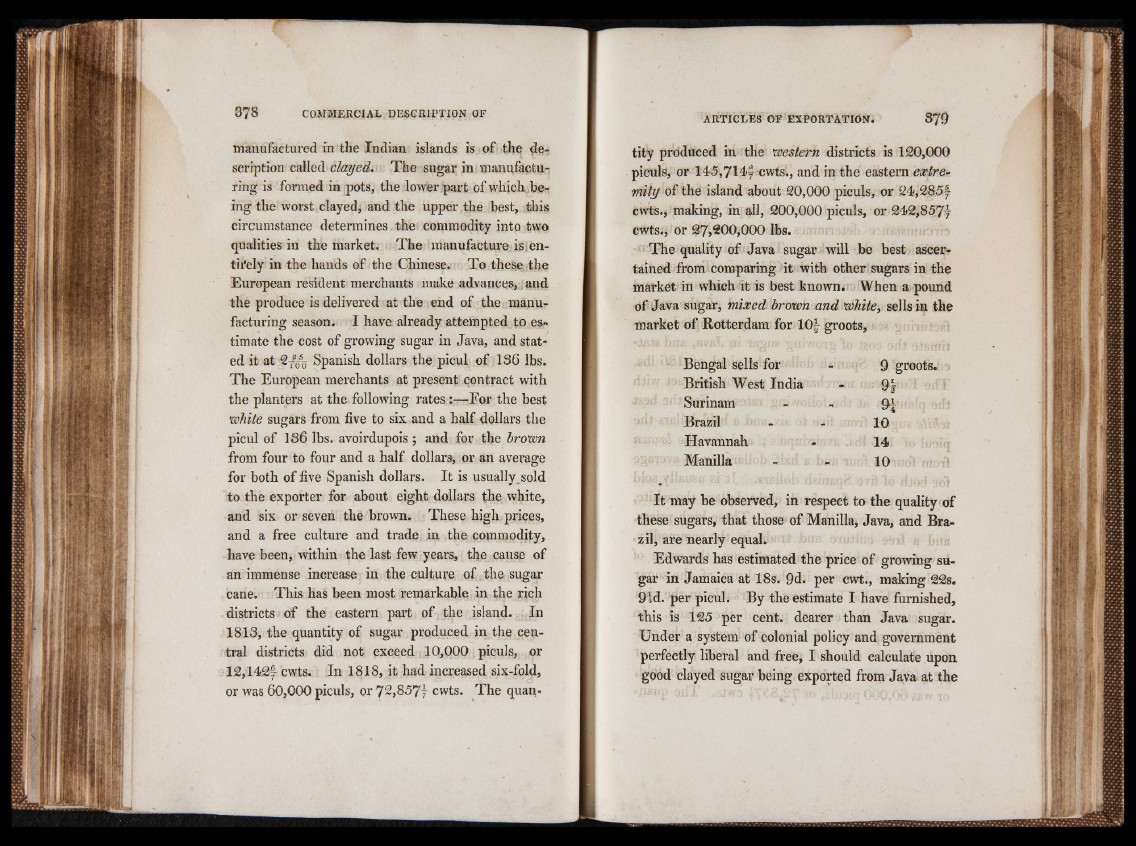
manufactured in the Indian islands is of the description
called clayed. The sugar in manufacturing
is formed in pots, the lower part of which being
the worst clayed* and the upper the best, this
circumstance determines the commodity into two
qualities in the market. The manufacture is: entirely
in the hands of the Chinese. To these the
European resident merchants make advances, and
the produce is delivered at the end of the manufacturing
season. I have already attempted to estimate
the cost of growing sugar in Java, and stated
it at €t2q5q Spanish dollars the picul of 136 lbs.
The European merchants at present contract with
the planters at the following rates ;—-For the best
white sugars from five to six and a half dollars the
picul of 136 lbs. avoirdupois ; and for the brown
from four to four and a half dollars, or an average
for both of five Spanish dollars. It is usually.sold
to the exporter for about eight dollars the white,
and six or seven the brown. These high prices,
and a free culture and trade in the commodity,
have been, within the last few years, the cause of
an immense increase in the culture of the sugar
cane. This has been most remarkable in the rich
districts of the eastern part of the island. In
1813, the quantity of sugar produced in the central
districts did not exceed 10,000 piculs, or
12,142- cwts. In 1818, it had increased six-fold,
or was 60,000 piculs, or 72,857} cwts. The quarv
tity produced in the western districts is 120,000
piculs, or 145,714} cwts., and in the eastern extremity
of the island about 20,000 piculs, or 24,285f
cwts., making, in all, 200,000 piculs, or 242,857}
cwts., or 2 7 ,200,000 lbs.
The quality of Java sugar will be best ascertained
from comparing it with other sugars in the
market in which it is best known. When a pound
of Java sugar, mixed brown and white, sells in the
market of Rotterdam for 10} groots,
Bengal sells for 9 groots.
British West India 9}
Surinam 9}
Brazil - 10
Havannah 14
Manilla 10
It may be observed, in respect to the quality of
these sugars, that those of Manilla, Java, and Bra-
zil, are nearly equal.
Edwards has estimated the price of growing sugar
in Jamaica at 18s. 9d. per cwt., making 22s.
9 Id. per picul. By the estimate I have furnished,
this is 125 per cent, dearer than Java sugar.
Under a system of colonial policy and government
perfectly liberal and free, I should calculate upon
good clayed sugar being exported from Java at the